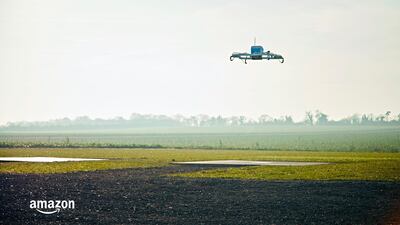Electric aircraft such as drones could account for 30 per cent of same-day package deliveries by 2040 as network scale dramatically brings down costs, according to LEK. Consulting.
The exact market share for vertical-takeoff-and-landing aircraft will depend on how transport operators configure their networks and the comparable cost of transporting goods through road-based methods, LEK said in a report on Monday.
Drones aren’t likely to replace traditional freight but will add to existing logistics systems to avoid congestion.
While using drones and other electrical aircraft to carry people and freight are already being considered, it’s the transport of cargo by remote pilots or autonomous technology that has attracted the attention of the world’s biggest companies.
Amazon.com and Chinese e-commerce giant JD.com have both talked up the prospect of deploying drones for deliveries on a large scale, while Alphabet’s Google this month sought approval to use them to research firefighting.
Electric vertical takeoff craft require less space than planes or helicopters, and the industry could be worth several billion dollars in a country like Australia, LEK. said.
But a number of hurdles remain, including building sufficient scale that it becomes more cost effective than a taxi or van, as well as community acceptance of the aircraft flying above cities and homes.

